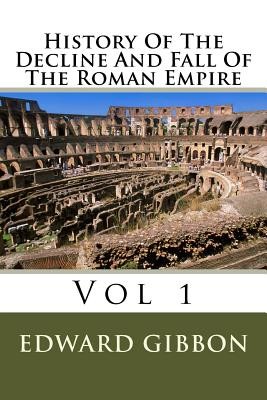
- We will send in 10–14 business days.
- Author: Edward Gibbon
- Publisher: CreateSpace Independent Publishing Platform
- ISBN-10: 1499775857
- ISBN-13: 9781499775853
- Format: 15.2 x 22.9 x 2.4 cm, minkšti viršeliai
- Language: English
- SAVE -10% with code: EXTRA
History Of The Decline And Fall Of The Roman Empire (e-book) (used book) | bookbook.eu
Reviews
Description
From the middle of the second century CE, The Roman Empire faced increasing Germanic tribe infiltration along the Danubian and Rhine borders, and internal political chaos. Without efficient imperial succession, Romans in from the third century set up generals as emperors, who were quickly deposed by rival claimants. Facilitating further territorial losses to Barbarian tribes, this continued until Diocletian (r. 284-305). He and Constantine (324-337) administratively reorganized the empire, engineering an absolute monarchy. Cultivating a secluded imperial tenor, Constantine the Great patronized Christianity, particularly in his new city Constantinople, founded on the ancient site of Byzantium. Christianization, in the Hellenized and Mediterranean cities and among certain Barbarian newcomers, proceeded with imperial support, and became the state religion under Theodosius (r. 379-95).
EXTRA 10 % discount with code: EXTRA
The promotion ends in 21d.09:23:37
The discount code is valid when purchasing from 10 €. Discounts do not stack.
- Author: Edward Gibbon
- Publisher: CreateSpace Independent Publishing Platform
- ISBN-10: 1499775857
- ISBN-13: 9781499775853
- Format: 15.2 x 22.9 x 2.4 cm, minkšti viršeliai
- Language: English English
From the middle of the second century CE, The Roman Empire faced increasing Germanic tribe infiltration along the Danubian and Rhine borders, and internal political chaos. Without efficient imperial succession, Romans in from the third century set up generals as emperors, who were quickly deposed by rival claimants. Facilitating further territorial losses to Barbarian tribes, this continued until Diocletian (r. 284-305). He and Constantine (324-337) administratively reorganized the empire, engineering an absolute monarchy. Cultivating a secluded imperial tenor, Constantine the Great patronized Christianity, particularly in his new city Constantinople, founded on the ancient site of Byzantium. Christianization, in the Hellenized and Mediterranean cities and among certain Barbarian newcomers, proceeded with imperial support, and became the state religion under Theodosius (r. 379-95).


Reviews